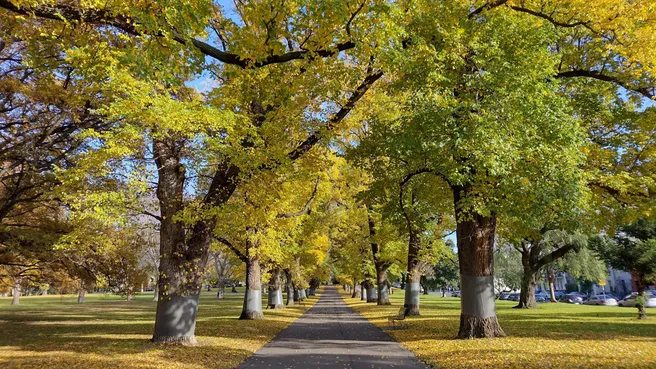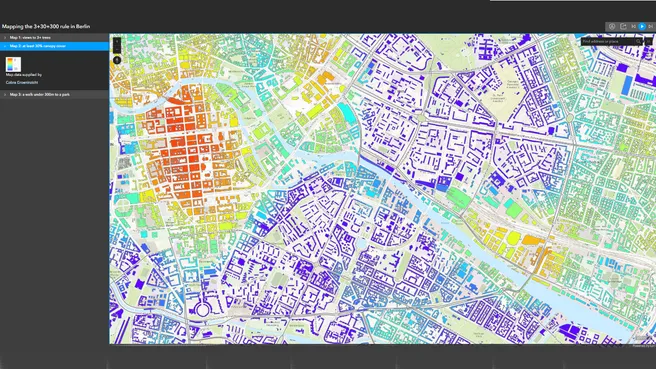The researchers studied over 2.5 million buildings across eight cities using an emerging sustainable cities measure, known as the ‘3-30-300' rule. The rule, devised by Dutch urban forestry expert Professor Cecil Konijnendijk, states every house, school and workplace should have a view of at least three trees, be in a neighbourhood with at least 30% canopy cover, and be within 300 metres of a park. Only Seattle and Singapore passed the 30% canopy benchmark, with 45% and 75% of buildings in these cities enjoying adequate shade, respectively. Access to parks was also patchy, with Singapore and Amsterdam scoring high while Buenos Aires and New York City scored poorly.
Wolfgang Weisser, Professor of Terrestrial Ecology (TUM), said metrics that benchmark the adequacy of green infrastructure at a neighbourhood level in relation to human wellbeing were still rare. “Some of the metrics we use now are not really sufficient whereas the ‘3-30-300' metric really demands that nature is brought to the areas that people actually live and work in. A municipality with almost treeless streets and a few large, well-forested parks, which is true for many German cities, may score well on aggregated metrics of canopy and per-capita greenery but will be exposed as inadequate by the highly local ‘3’ and ‘30’ requirements.”
More canopy cover for climate-adapted cities needed
Lead researcher and RMIT University research fellow, Dr Thami Croeser, said it was concerning that most of the buildings in the study failed the 30% tree canopy test. With 2023 being the hottest year on record and 25% of the global population experiencing dangerous levels of extreme heat, canopy cover was urgently needed to cool down our cities. “Previous research has shown depression, anxiety, obesity and heatstroke are more prevalent in urban areas that lack access to shady tree canopy and green open spaces,” said Croeser, from RMIT’s Centre for Urban Research.
“Canopy cover doesn’t just increase cooling, it can also reduce flood risk as well as benefit mental and physical health and support urban biodiversity. Studies say we actually need at least 40% canopy cover to substantially lower daytime air temperatures, so the ‘30’ metric is the absolute bare minimum - and most buildings we studied don't even reach that goal.”
Integrating trees into urban planning
Croeser said current ways of designing or retrofitting streets did not support healthy canopy growth as planning prioritised infrastructure such as cabling and pipelines over tree growth. “We need to stop thinking that allocated spaces for buildings and roads are permanent when they could be reallocated to prioritise green infrastructure. 30% canopy cover seems like a high bar if we keep doing things the same way, but it’s totally achievable if we change a bit of our practice. Currently, we put trees last, and if it gets in the way of cabling or pipes, we remove the tree or replace it with a sapling. Designing trees into streets early, and then figuring out win-win solutions to get in utilities and traffic access, is one of the big changes we need to make a difference.”
Trees currently tend to be planted in conditions that were not easy for them to grow in, Croeser said. “The soil is compacted, there’s asphalt over them and when it rains, the water runs off into the gutters instead of into the soil. Earlier research shows that if urban trees are planted in better quality soil with enough space for them to grow, where rainwater can run directly into the soil, it will help trees grow bigger faster to address our lack of canopy cover. Trees in urban environments are also removed and replaced with saplings, or pruned very heavily, so not many trees get the opportunity to grow into big old canopy trees except in a few lucky areas.”
Publication:
Croeser, T., Sharma, R. et al.: Acute canopy deficits in global cities exposed by the 3-30-300 benchmark for urban nature. Nat Comms (2024). DOI: 10.1038/s41467-024-53402-2
Additional editorial information:
https://spaces.hightail.com/space/F3uvHSls34

